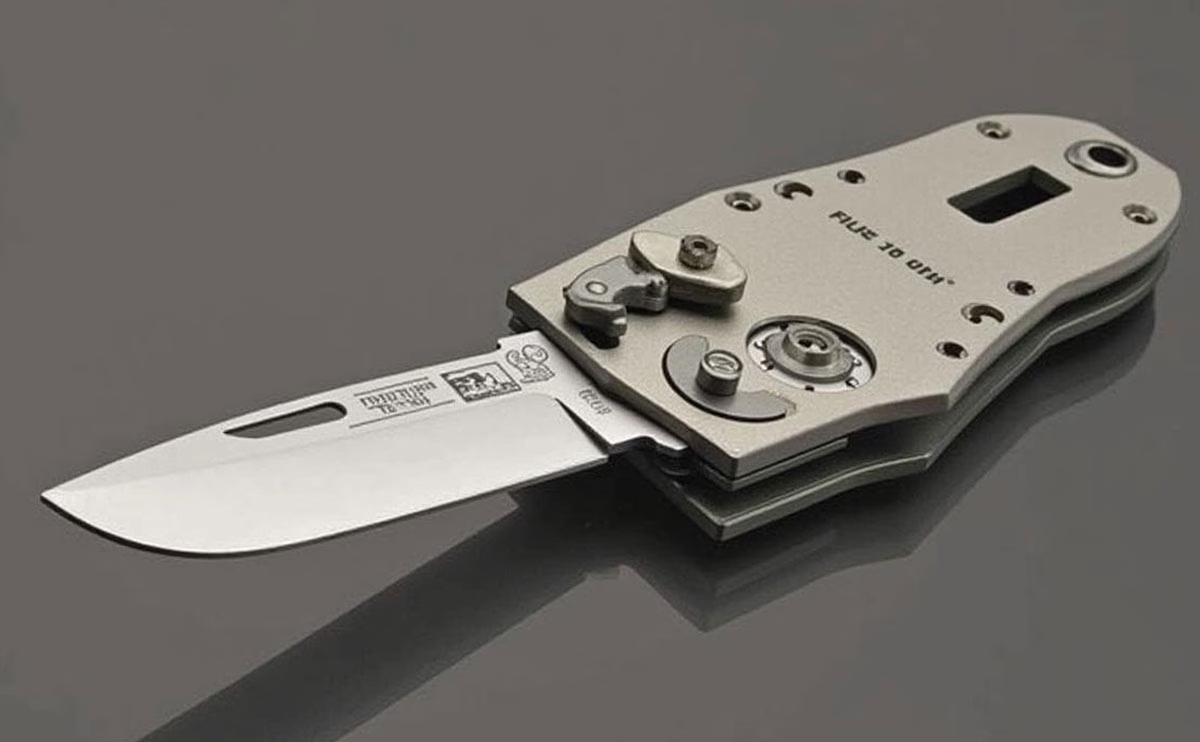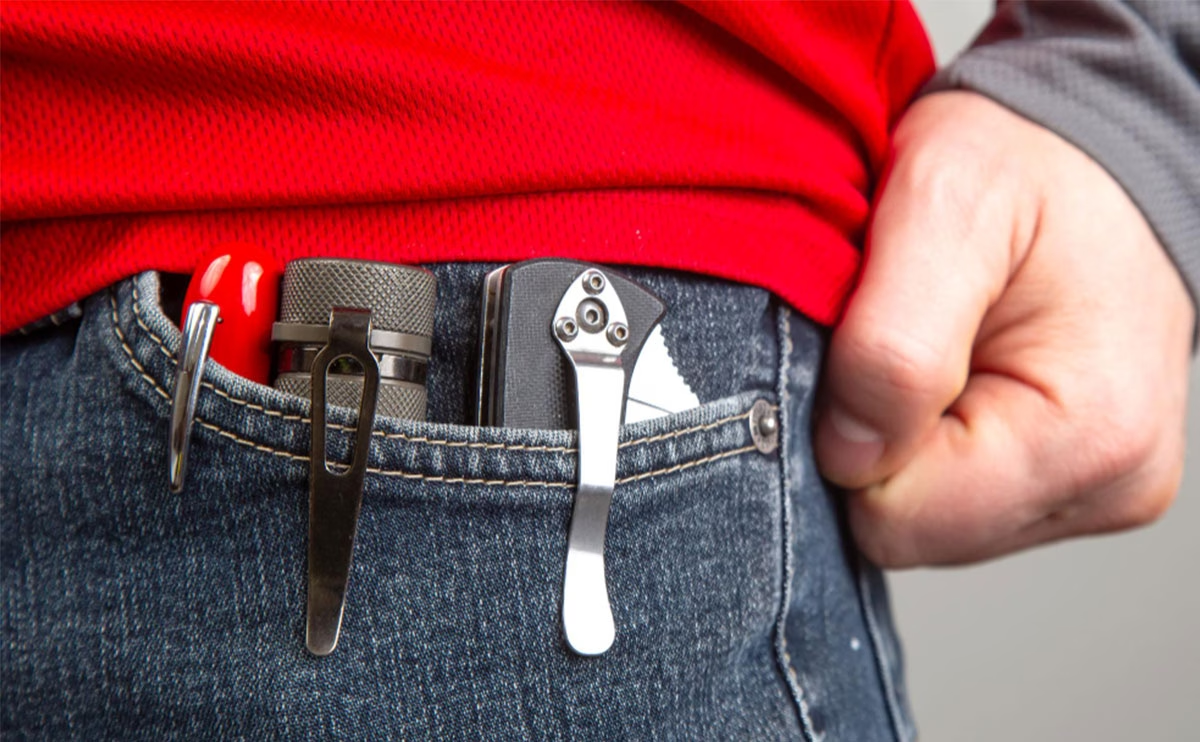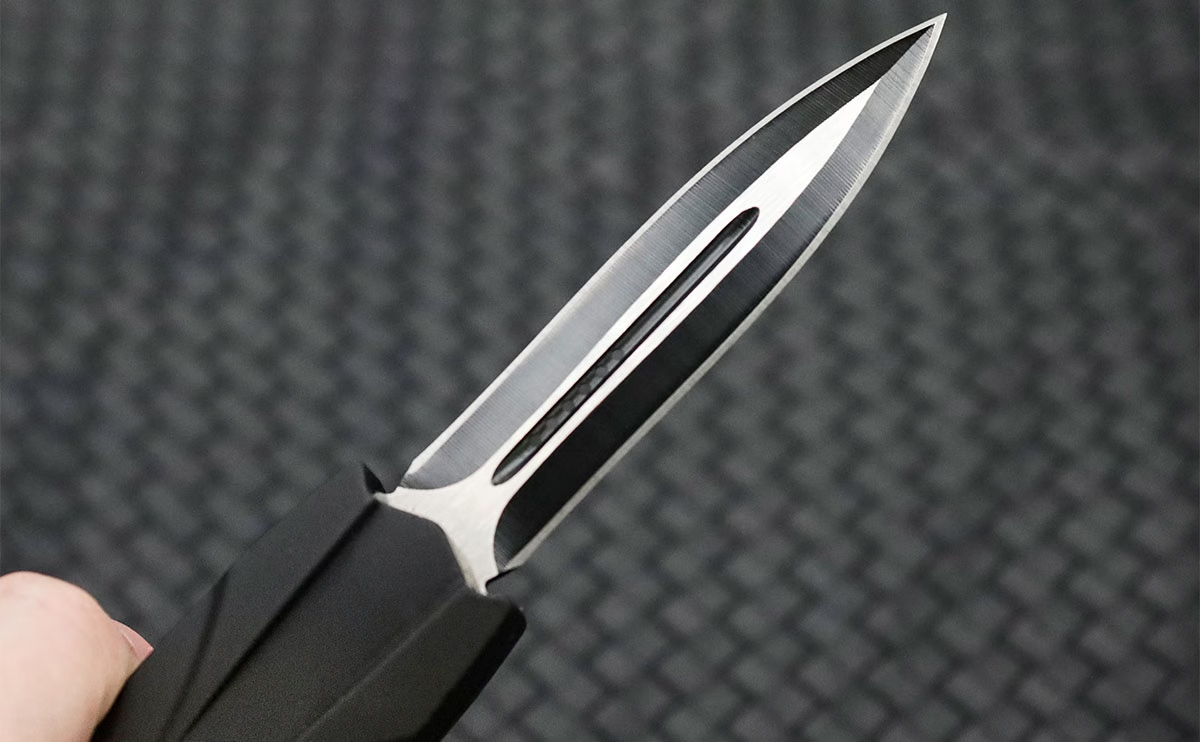What Is a Gravity Knife? A Comprehensive Guide

A gravity knife is a type of folding knife that operates by releasing its blade through the force of gravity. Unlike traditional knives that require manual force or a spring to deploy the blade, the gravity knife uses gravity to open. This type of knife is unique for its self-opening mechanism, where the blade is typically housed in the handle, and the user activates its release by a flick of the wrist.
The Mechanics Behind a Gravity Knife
A gravity knife operates using a unique mechanism that allows the blade to be deployed with the help of gravity. Unlike traditional folding knives that require manual force or a spring-assisted mechanism to open, a gravity knife relies on gravity and a few key components to perform its self-deploying action. Let’s take a closer look at how this fascinating tool works.

Basic Components of a Gravity Knife
To understand how a gravity knife functions, it’s important to first look at its basic components. Although designs can vary slightly, most gravity knives consist of the following elements:
- Blade: The cutting edge of the knife, typically made from steel, is housed inside the handle when not in use.
- Handle: The handle is the part of the knife that the user holds. It is usually designed to be ergonomic, offering a firm grip during use.
- Locking Mechanism: This is a critical component that holds the blade securely in place when the knife is closed. It also ensures that the blade doesn’t accidentally deploy during use or storage.
- Spring or Bearing System: Many gravity knives feature a spring or ball-bearing system that helps secure the blade in place when it is retracted into the handle and aids in blade deployment when triggered.
How the Blade Deploys
The most distinct feature of a gravity knife is how it deploys its blade. Unlike standard folding knives that require manual force to open, gravity knives use the force of gravity to release the blade.
- Triggering the Mechanism: To deploy the blade, the user typically flicks or tilts the handle downward. This movement activates the internal mechanism, which allows gravity to pull the blade out of the handle.
- Gravity’s Role: Once the handle is tilted or flicked, gravity takes over. The blade is held inside the handle by a spring-loaded or ball-bearing mechanism. As the handle is tilted downward, gravity overcomes the holding mechanism, allowing the blade to fall out and extend to its full length.
- Locking the Blade: Once fully extended, the blade is usually locked in place by a mechanism that prevents it from closing accidentally. Some gravity knives use a simple spring-loaded locking system, while others may incorporate a ball-bearing lock or pin mechanism to ensure the blade stays in place during use.
The Different Mechanisms of Action
While all gravity knives operate using gravity, the exact mechanism can vary depending on the design. Here are some common ways gravity knives function:
- Flick Mechanism: In this design, the user holds the handle and flicks their wrist. The flicking motion triggers a release mechanism, allowing the blade to fall out of the handle due to gravity.
- Ball-Bearing System: Some gravity knives use a ball-bearing system that holds the blade in place. When the user tilts the handle, the bearings roll away, releasing the blade. This type of system often offers a smooth deployment.
- Spring-Assisted Mechanism: Some modern gravity knives incorporate a spring-assisted mechanism to help the blade deploy faster. Once the user activates the blade, the spring gives the blade an extra push, making it quicker to open.
Blade Retraction and Locking Mechanism
When not in use, the blade of a gravity knife must be safely stored within the handle. This is where the locking mechanism comes in:
- Blade Retraction: To retract the blade, the user typically pushes a button or slide on the handle, which disengages the locking mechanism. This allows the blade to slide back into the handle, where it is held in place by either the spring or ball-bearing system.
- Locking the Blade: When the blade is deployed, it locks in place to prevent accidental closure. This locking system can vary, but it typically uses a spring or pin that secures the blade within the handle, keeping it open and ready for use.
Variations in Design
Over the years, gravity knives have evolved, with different designs and mechanisms being introduced to improve functionality, safety, and reliability. Some popular variations of gravity knives include:
- Double-Action Gravity Knives: These knives feature two movements for deployment—one for opening the blade and another for locking it in place. This dual-action system is designed to improve the speed and safety of the knife.
- Push-Button Mechanism: Some gravity knives feature a push-button mechanism that allows the user to open the blade quickly and easily with one hand. This type of mechanism is often seen in modern tactical or military-style gravity knives.
- Reinforced Locking Mechanisms: Some high-end gravity knives come with reinforced locking systems to ensure the blade stays securely in place during use, reducing the risk of accidents.
History of the Gravity Knife
Origins in Military and Survival Tools
The gravity knife has its roots in military history, especially in the early 20th century. It was designed as a tool for soldiers, particularly paratroopers, who needed to cut themselves free from entangled parachute cords in emergency situations. During World War II, gravity knives were widely used by military personnel due to their quick, one-handed deployment.
Evolution of the Gravity Knife Design
Over time, the design of gravity knives evolved. Early models were often bulky and rugged, designed to withstand harsh military conditions. As demand for practical, everyday carry knives grew, manufacturers started making lighter and more refined versions, focusing on improved safety features and usability. Today, gravity knives are still produced, but they are now mostly found in collectors’ circles or in specific tactical applications.
Are Gravity Knives Legal?
Legal Status in the United States
In the United States, the legality of gravity knives is determined by both state and local laws. In general, federal law does not specifically prohibit gravity knives, but they may be considered illegal in certain states due to their automatic blade deployment.
- New York: Gravity knives are explicitly banned in New York, where they are classified under the same category as switchblades and other prohibited knives. However, in 2019, a federal judge ruled that the state’s definition of a gravity knife was too broad, leading to a revision of the law. Now, only certain models of gravity knives are illegal.
- California: In California, gravity knives are legal to possess, carry, and use, unless you are convicted of a felony. However, laws can vary in different municipalities, so local regulations should always be checked.
- Texas: Texas generally allows gravity knives, though the knife’s design and intended use may affect its legality. It is legal to carry a gravity knife in most circumstances, as long as it is not being used for unlawful purposes.
- Other States: Other states like Florida, Illinois, and Ohio have varying laws, but many do not have specific restrictions on gravity knives. However, it’s important to consult local laws before purchasing or carrying one, as some states may classify them as illegal or require special permits for carrying.
Legal Status in Other Countries
The legal status of gravity knives also varies internationally, and it is important to know the laws of the country in which you live or are visiting.
- Germany: Gravity knives are generally legal in Germany, and they are considered a practical tool for professional use, especially in industries such as sailing and construction. However, the laws may differ in terms of carrying the knife for personal use or during public events.
- United Kingdom: In the UK, knives with automatic opening mechanisms (like gravity knives) are typically banned under the Offensive Weapons Act. Possession or sale of such knives is illegal, and there can be severe penalties for owning or using them.
- Canada: In Canada, gravity knives are often treated similarly to switchblades and may be classified as prohibited weapons. Possession of a gravity knife could result in criminal charges, particularly in Ontario and Quebec, where knife laws are stricter.
- Australia: The legality of gravity knives in Australia varies by state. In some states, they are considered illegal due to their automatic opening mechanism, while in others, they are more leniently regulated.
Legal Considerations and Restrictions
If you own or are considering purchasing a gravity knife, it’s important to understand not only the legality of possessing such a knife but also how it is categorized in the eyes of the law. Some key points to consider include:
- Intent and Use: In many places, the legality of a gravity knife can depend on how it is used. Carrying a gravity knife for self-defense or as a weapon may make it illegal, whereas using it as a tool for work or outdoor activities could make it legal.
- Blade Length: Some laws specify the length of the blade that can be carried legally. In some states, a gravity knife with a blade longer than a certain length might be considered illegal, regardless of its mechanism.
- Ownership vs. Carrying: In some regions, owning a gravity knife is legal, but carrying it in public may require a permit or special circumstances (such as being on private property or in certain types of employment).
Uses of a Gravity Knife
Military and Tactical Applications
Gravity knives were initially designed for military purposes, and they continue to serve in tactical situations today. For soldiers, paratroopers, and first responders, the ability to quickly deploy a blade in emergency situations is invaluable. Gravity knives are compact, easy to carry, and provide a one-handed operation, which is critical when dealing with life-threatening scenarios.
Survival and Utility Purposes
In addition to military uses, gravity knives are also practical for survival situations. The quick blade deployment can be extremely useful in various outdoor scenarios, such as cutting rope, preparing food, or performing basic repairs. Their ease of use makes them a reliable tool for outdoor enthusiasts and survivalists.
Safety and Precautions
Proper Handling of Gravity Knives
While gravity knives are convenient and useful, they require proper handling to avoid accidents. Because the blade deploys automatically, it is essential to store the knife safely, away from children or anyone who might unintentionally trigger the mechanism. Always ensure that the blade is securely locked in place when not in use.
Safety Tips for Users
When using a gravity knife, always maintain a firm grip on the handle to prevent any accidental flicking of the blade. Additionally, make sure you are aware of the blade’s position when deploying it, as improper handling can lead to injuries. For collectors, it is crucial to handle antique models with care, as they may be more fragile than modern versions.
Collecting Gravity Knives
Rarity and Value of Historical Models
For knife collectors, gravity knives hold a unique appeal. Vintage military models, especially those from World War II, can be particularly valuable. The rarity and historical significance of these knives make them highly sought after by collectors. Depending on the condition and provenance, some gravity knives can fetch significant prices on the market.
How to Start a Gravity Knife Collection
Starting a gravity knife collection can be an exciting and rewarding hobby. Begin by researching different models and understanding their history and value. Collecting can be done by focusing on specific time periods or countries of origin, and gradually building a collection over time.
Common Misconceptions About Gravity Knives
Misunderstanding the Terminology
One common misconception is that gravity knives are the same as switchblades. While both types of knives have automatic deployment, gravity knives rely on gravity to open, while switchblades use a spring mechanism. Understanding these differences is essential when discussing knife regulations and legality.
Gravity Knives vs. Switchblades
Another misconception is that gravity knives are more dangerous than switchblades. While both types of knives have automatic deployment, the design and safety mechanisms of gravity knives are generally considered to be safer, as they often require a flick or tilt to deploy, reducing the chance of accidental opening.
Conclusion
Final Thoughts on Gravity Knives
Gravity knives are unique, practical tools with a fascinating history. While they are not as commonly used today as they were during their military heyday, they remain a popular choice for collectors, outdoor enthusiasts, and those in tactical professions. Whether you are interested in their functionality, history, or simply their design, gravity knives offer a glimpse into a specialized tool that has stood the test of time.
FAQs
1. Are gravity knives legal in the United States?
Gravity knives are legal in some states, but banned in others. It’s essential to check your local laws before purchasing or carrying one.
2. What is the difference between a gravity knife and a switchblade?
Gravity knives use gravity to deploy their blade, while switchblades rely on a spring mechanism.
3. Can gravity knives be used for everyday carry?
In some regions, gravity knives are allowed for everyday carry, but in others, they may be restricted. Always check local laws before carrying one.
4. Are gravity knives safe to use?
While gravity knives are convenient, they must be handled with care. Always ensure the blade is locked properly when not in use.








